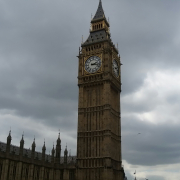Transformative or Tedious? The New UK Procurement Bill
The new UK public procurement legislation has been laid out in a Bill now which is being discussed and revised in the House of Lords. Leaving aside political comments, most independent experts, particularly the procurement academics and lawyers, see it as being somewhere in the range between “mildly disappointing” and “mildly positive”. (Read an excellent assessment from Professor Sanchez-Graells here and a useful set of proposals for improvement from the UK Anti-corruption Coalition here).
I suspect that is inevitable. Public procurement aims to meet several different objectives, but sadly these are not all congruent – we can’t have it all. Public procurement has to balance:
- Achieving fundamental value for money in what is being purchased – getting the right blend of quality and cost that enables the taxpayer to feel their money is being spent carefully and sensibly to generate the desired policy outcomes.
- Minimising the chances of fraud or corruption by making such actions difficult or easily detected.
- Encouraging innovative, dynamic, competitive markets – not just to help achieve future value for money in public spend, but because that will help the wider economy too.
- Contributing towards wider UK government and societal objectives – economic, social, environmental or, as we now see, more overtly “political” in nature. (Using public procurement to support the government’s “levelling up” agenda for example is the type of political objective we’ve never really seen before in public procurement).
- Doing all of this in manner that keeps the transactional cost for both buyer and supplier to acceptable levels.
The problem is that these objectives can be conflicting. Simplify processes and deregulate, and you may reduce transactional cost and stimulate markets, but it will inevitably increase the chance of fraud and corruption. Focus more on the “social value” benefits, and if you are not careful, you will jeopardise basic value for money. And so on.
So it is impossible to keep everyone happy with regulations, and this is why it is difficult to assess the long-term effects of the new Bill. It will be at least two years before we see how the different objectives are being met or not met.
Perhaps the element that has most potential for transformation, but is also a major area of uncertainty, is the freedom for contracting authorities (CAs) to design new procurement processes. Will we see innovative and effective new ideas emerging, including innovative use of technology? Or will CAs quickly default to the “recommended” standard options that Cabinet Office are going to provide?
No doubt we’ll be writing further about this topic as the Bill proceeds into law, and there are some key areas where I’m not clear yet about the likely implications. The proposals on the role of technology, and the whole transparency area both have some positive aspects, for instance, but the devil is in the detail. However, here are a few predictions to be going on with.
- The Cabinet Office standard processes will look pretty similar to the previous EU procedures, but with a bit more “negotiation” added in. But there will be so many caveats and warnings about (e.g.) equal treatment for suppliers that CAs will only use negotiation very cautiously…
- … unless they are running a corrupt procurement, where somebody in a powerful position wants a particular supplier to win. But of course that NEVER happens in the UK(!!) I’m afraid we will see increasing corruption in public procurement, not just because of the greater freedoms, but because moral and ethical standards in the country are eroding from the top down.
- Some lawyers are getting excited about the new rules on exclusion (mainly because of their complexity) that enable buyers to ban firms from bidding. But they will prove to be largely theoretical and decorative. I can’t imagine many hard-pressed procurement directors looking at the really complicated regulations for exclusions and saying anything other than “OK, let’s forget about this”. (See Pedro Telles on this).
- Within a year or two, we will see suppliers complaining that the new rules don’t seem to have simplified public procurement. I’m not criticising the Cabinet Office policy folk here – I’m just not sure it is possible to really simplify matters whilst trying to meet all those different goals. And no, I don’t have amazing transformative ideas myself, to be honest.
- Many older / less flexible public procurement professionals will retire or move out of the sector. “I’ve done things this way for 10/20/30 years, I just can’t be bothered with the hassle of learning all this new stuff now”. I’m already hearing of that issue, and we will see a staffing crisis in public procurement (unless we go into a major recession that releases private sector professionals!)
- Given points 1 and 5, we will see more and more use of frameworks let by collaborative buying organisations, (Crown Commercial Services, YPO, NHSSC etc). Unfortunately this is probably not good news for supply chain resilience in general, or for local, smaller or innovative suppliers. However, the “new” central procurement unit won’t have much impact.
Finally, there are metrics that will prove whether these predictions come to pass. If they do, we will see more single tender procurement exercises (only one bidder or a “direct award”). We’ll see further growth of the buying aggregators. There will be a very low number of exclusions.
If I am wrong, we will see happy suppliers, more bidders per contract, fewer single supplier tenders, growth in contracts to local, smaller suppliers, social enterprises and so on. There will be fewer Private Eye-type scandal and corruption stories, and a decent number of dodgy suppliers excluded … So I hope I am just being a grumpy old pessimist!










Leave a Reply
Want to join the discussion?Feel free to contribute!